The following diagrams illustrate the effect of cost centre breakdown. Examples 1 and 2 use an invoice to illustrate the expected postings and examples 3 and 4 use a purchase payment that includes discount.
The examples are based on transactions entered for a supplier account in the Purchase Ledger. The same processing applies in the Sales Ledger with different accounting results to the Nominal Ledger.
-
Example 1 (invoice) illustrates posting to the Nominal Ledger when the cost centre and department elements of the default nominal codes are left blank.
Invoice, cost centre breakdown on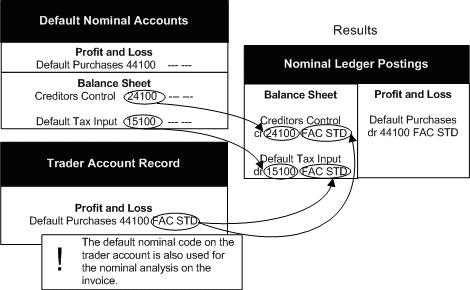 Invoice, cost centre breakdown off
Invoice, cost centre breakdown off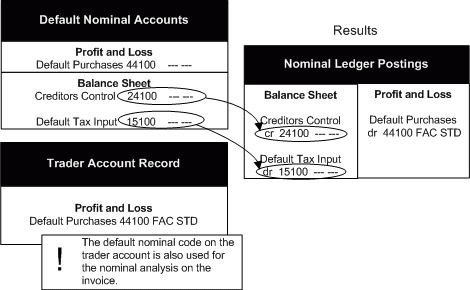
-
Example 2 (invoice) illustrates posting to the Nominal Ledger when the full nominal account codes are specified (account code, cost centre and department) in the defaults.
Invoice, cost centre breakdown on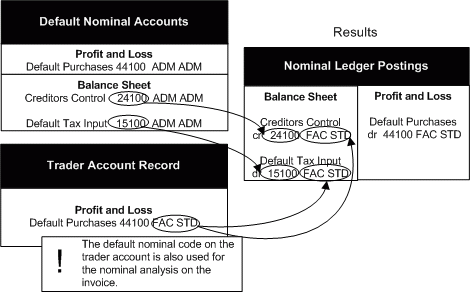 Invoice, cost centre breakdown off
Invoice, cost centre breakdown off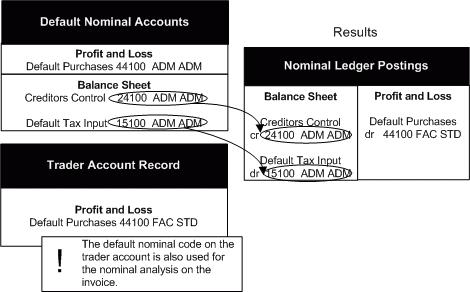
-
Example 3 (purchase payment with discount) illustrates posting to the Nominal Ledger using codes with the full nominal code specified and some without.
Payment including discount, cost centre breakdown on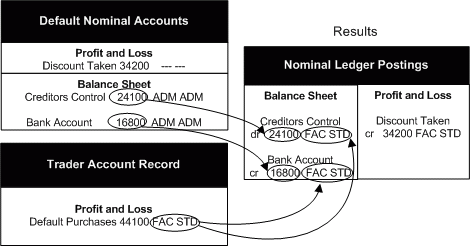 Payment including discount, cost centre breakdown off
Payment including discount, cost centre breakdown off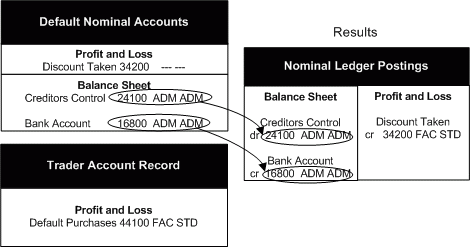
-
Example 4 (purchase payment with discount) illustrates posting to the Nominal Ledger when the full nominal account codes are specified (account code, cost centre and department) in the defaults.
Payment including discount, cost centre breakdown on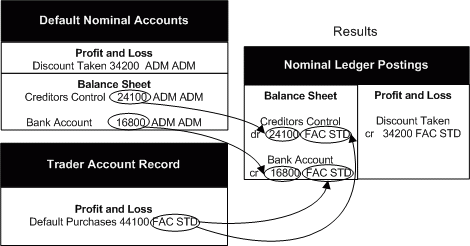 Payment including discount, cost centre breakdown off
Payment including discount, cost centre breakdown off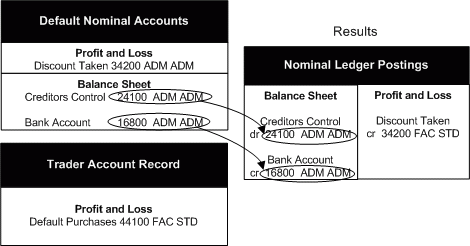
Note: Examples 3 and 4 assume that you are using the Cash Book to control your bank transactions.